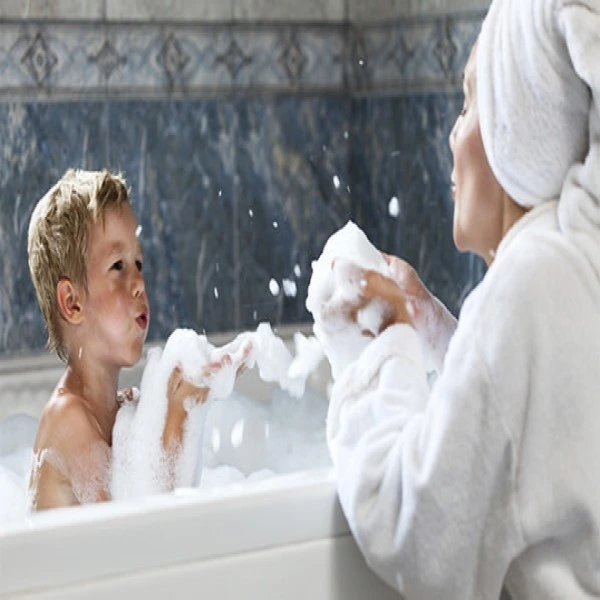RO Plant For Residences
To address water hardness levels exceeding 600 ppm in residential areas, particularly for bathing and general use, installing a RO plant for home is highly recommended. ro plant for home utilize a semi-permeable membrane to effectively remove minerals that cause water hardness. When selecting an RO plant for home, opt for a high-capacity system, such as a 500 LPH RO plant or a 1000 LPH RO plant, from a reputable manufacturer. These systems should come equipped with pre-filters and post-filters to enhance water quality.
The RO plant for home should be installed near the main water supply, following the manufacturer’s instructions, and regular maintenance, including filter and membrane replacements, is necessary. Once installed, the 500 LPH RO plant or 1000 LPH RO plant will provide softened water for bathing and general use, effectively addressing high water hardness levels. Although there are initial installation costs and ongoing maintenance, the RO plant for home offers a long-term solution, providing better water quality throughout your residence.
Upgraded Lifestyle After Using Whole House RO Plant







Benefits of RO Plants for a Home
Having an RO plant at home offers several benefits beyond just providing clean water and water for cooking. Here are some of the key advantages:
- Improved water quality: An RO plant for home effectively removes a wide variety of contaminants, including bacteria, viruses, heavy metals, pesticides, chlorine, and other harmful chemicals. This results in better overall water quality for various household uses.
- Better-tasting beverages: By filtering out impurities, an RO plant enhances the taste of beverages such as coffee, tea, and juices. Removing chlorine and other unwanted substances improves the flavor, making your drinks more enjoyable.
- Enhanced hygiene: RO water from an RO plant for home can be used for personal hygiene tasks, such as washing your face or brushing your teeth. Its purity helps prevent skin irritation and reduces the risk of oral health problems, promoting better hygiene.
- Extended lifespan of appliances: 500 LPH RO plant or 1000 LPH RO plant, with their mineral-free water, prevent scaling and clogging in pipes and household appliances such as dishwashers, washing machines, water heaters, and coffee machines. This can help extend the lifespan of these appliances.
- Spotless cleaning: When using RO water from an RO plant for home for cleaning tasks, such as washing dishes, windows, or cars, it leaves behind fewer streaks and spots. The absence of minerals reduces residue, giving a cleaner, shinier finish.
- Healthier plants and pets: Watering your plants and pets with RO water from a 500 LPH RO plant or 1000 LPH RO plant reduces their exposure to harmful chemicals and contaminants found in tap water. This contributes to healthier plants and pets.
- Hair benefits: Using RO water from an RO plant for rinsing your hair minimizes exposure to harsh chemicals and minerals often present in tap water. This helps maintain healthier, shinier hair, reduces mineral buildup, and protects color-treated hair. It can also reduce scalp irritation caused by impurities in regular tap water.
- Peace of mind: Having an RO plant for home provides peace of mind, knowing that you always have access to a reliable source of clean, purified water for cooking, cleaning, and other household uses. It eliminates concerns about the quality of local tap water, especially if the water supply is unreliable or questionable.

In summary, an RO plant, such as a 500 LPH RO plant or 1000 LPH RO plant, enhances water quality, promotes health, protects appliances, and ensures peace of mind for you and your family.
RO Plant for an Independent House

RO Plant for a Community


RO Plant for an Apartment

Process of RO Plant Deployment
RO Plant For An Independent House
- Assess water quality
- Choose the right RO system
- Find installation location
- Gather necessary equipment
- Install pre-filters
- Connect the RO system
- Install post-filters and storage tank
- Connect the drain line
- Check for leaks and test the system
- Maintenance and servicing


RO Plant For An Apartment
- Obtain permission from the management/association.
- Assess water quality for contaminants.
- Collaborate with residents for consensus.
- Choose the appropriate RO system.
- Identify a suitable location within the apartment.
- Decide on centralized or individual systems.
- Hire a professional installer.
- Install pre-filters and post-filters.
- Ensure compliance with regulations.
- Establish a maintenance schedule.


RO Plant For An Community
- Assess water quality for contaminants.
- Form a community committee to oversee the project.
- Obtain necessary permissions from authorities.
- Seek community involvement and funding.
- Choose the appropriate RO system.
- Identify a suitable location within the community.
- Hire professionals experienced in community installations.
- Install pre-filters and post-filters.
- Conduct community education and awareness programs.
- Maintenance and servicing


